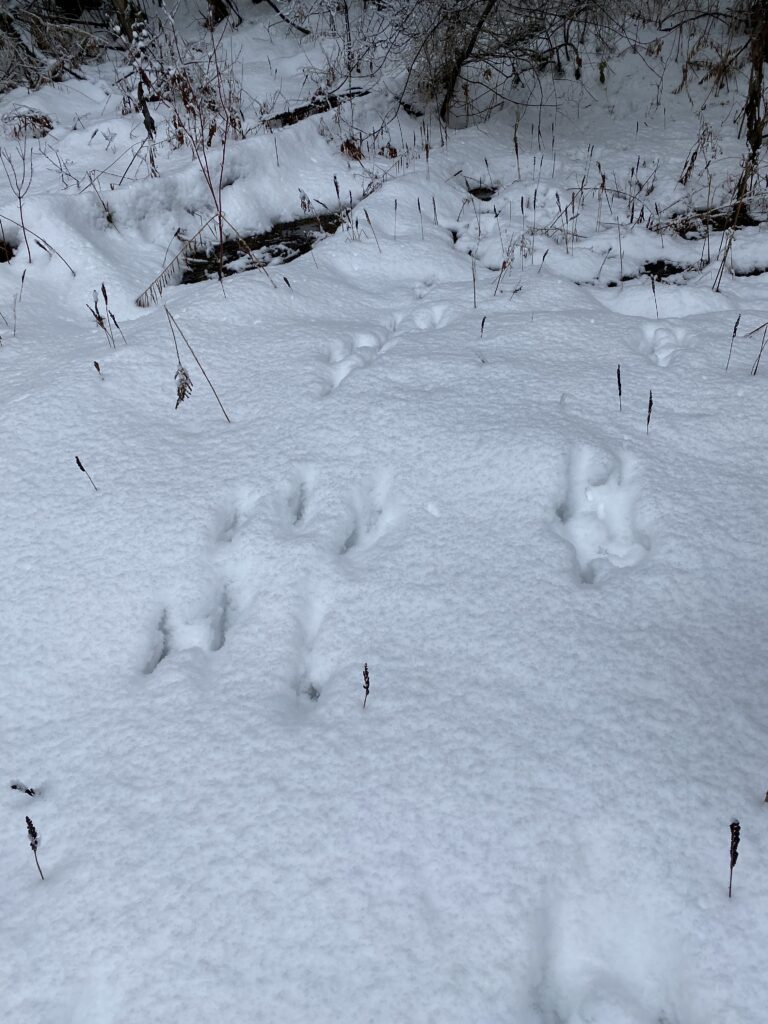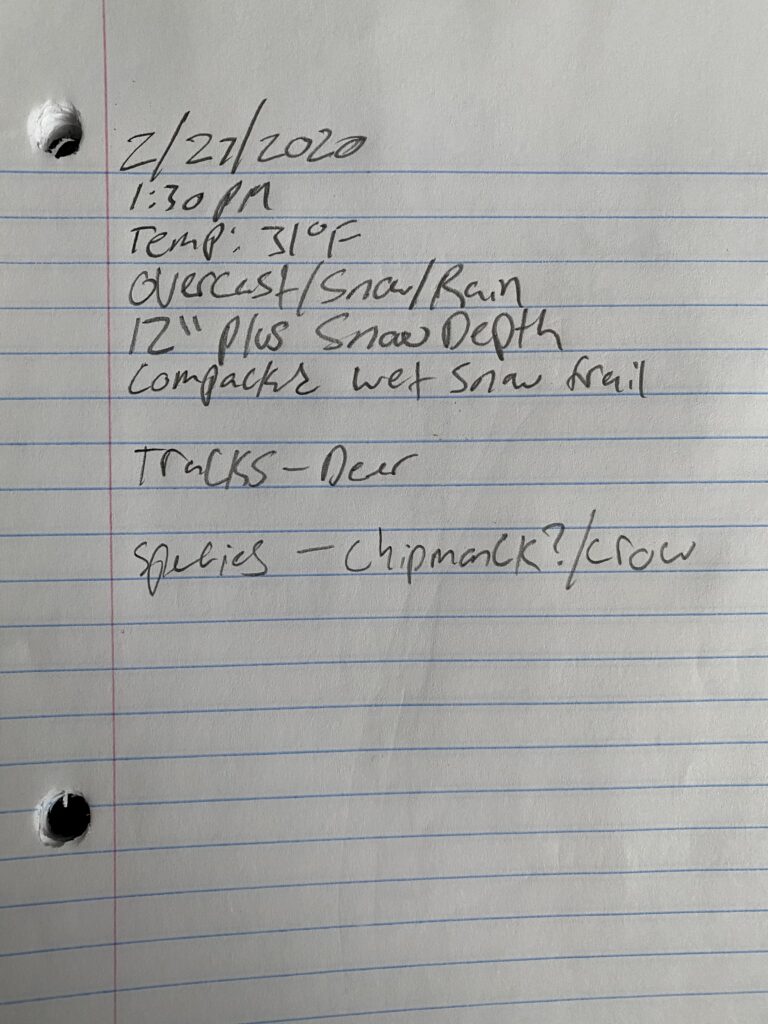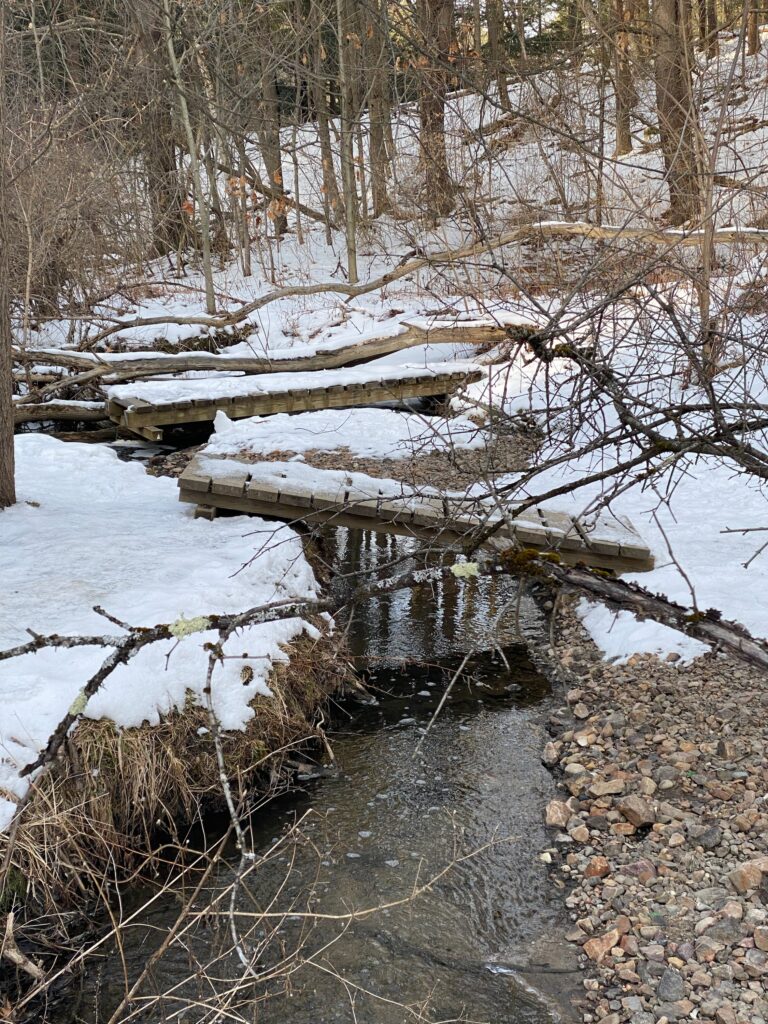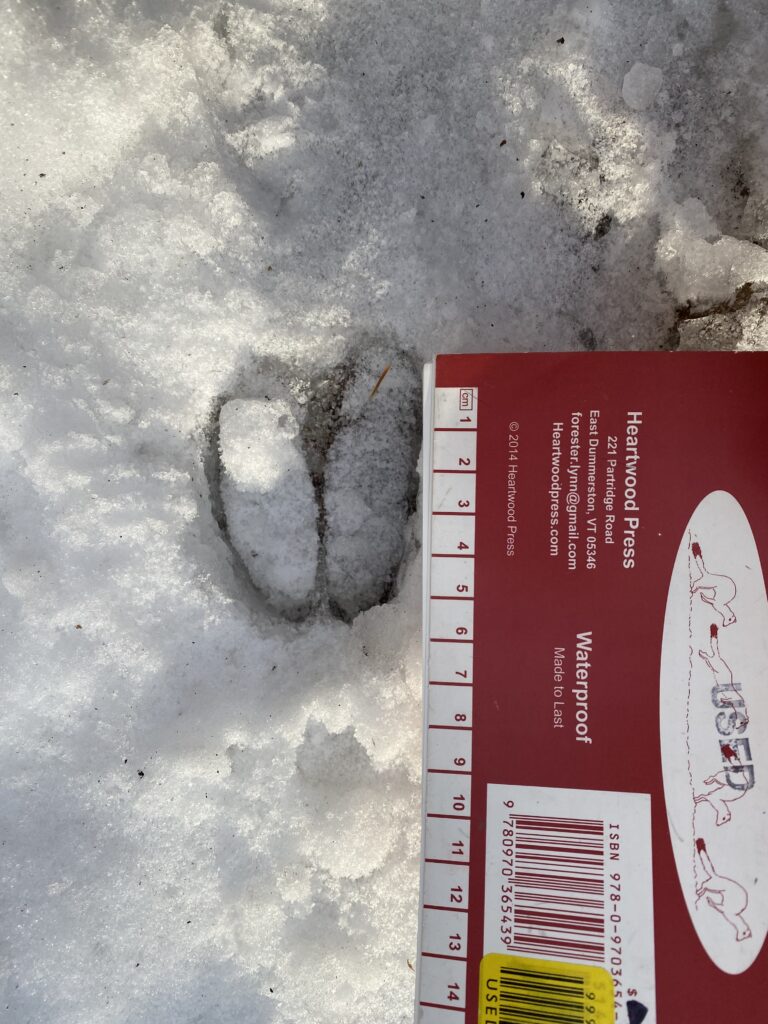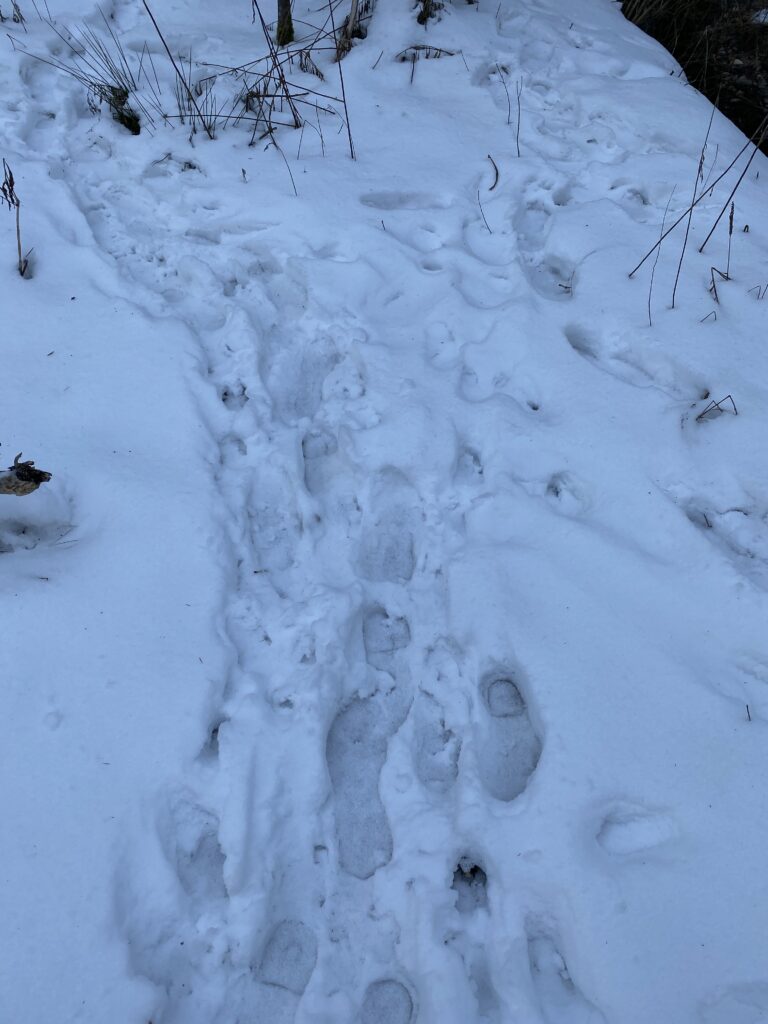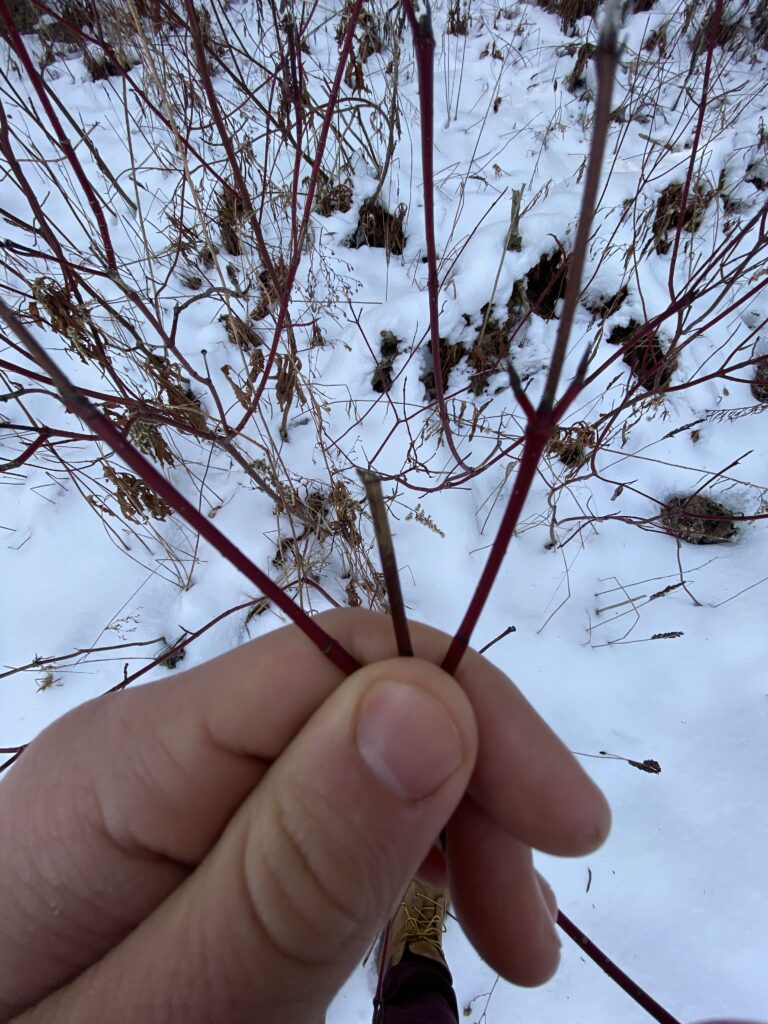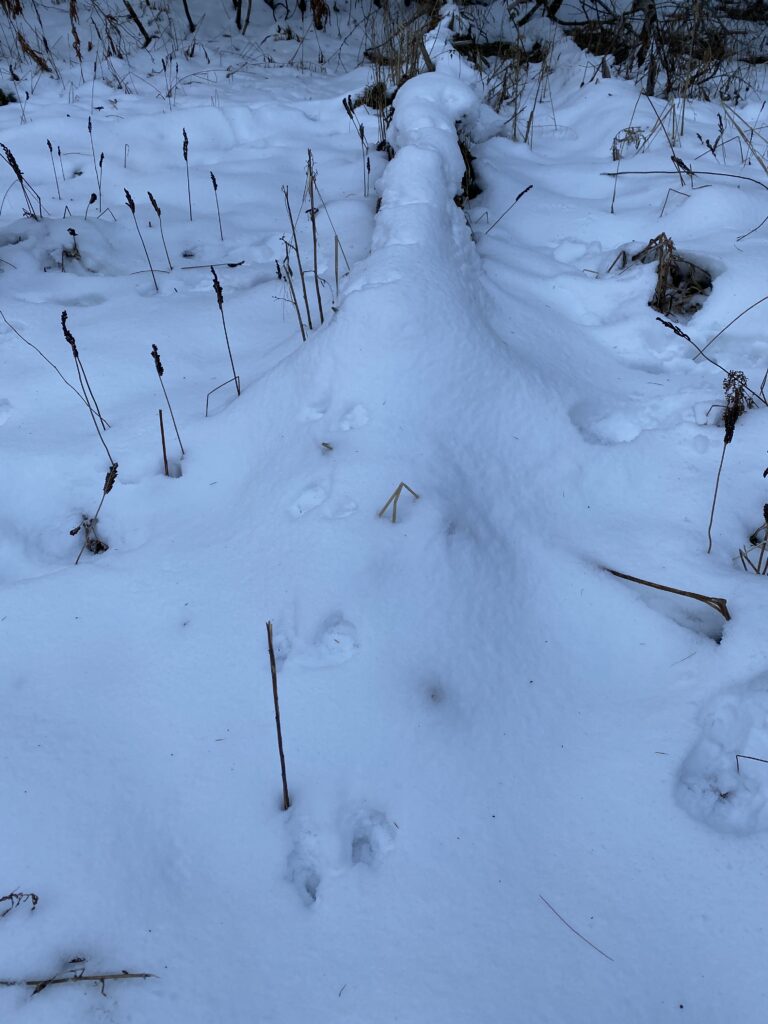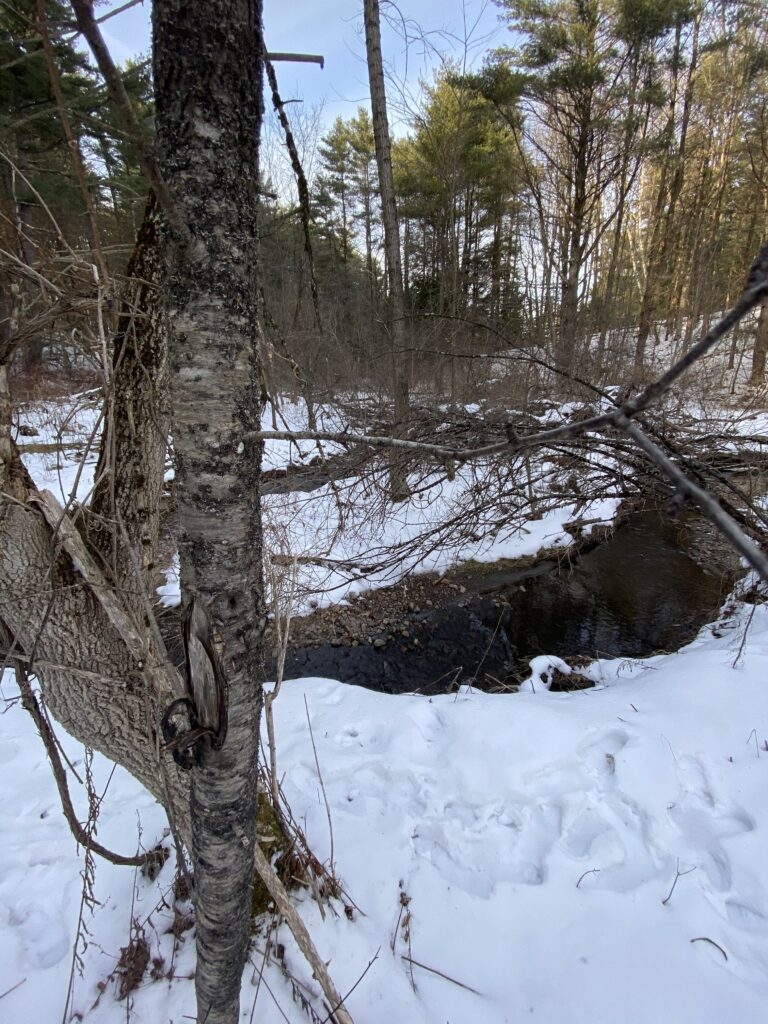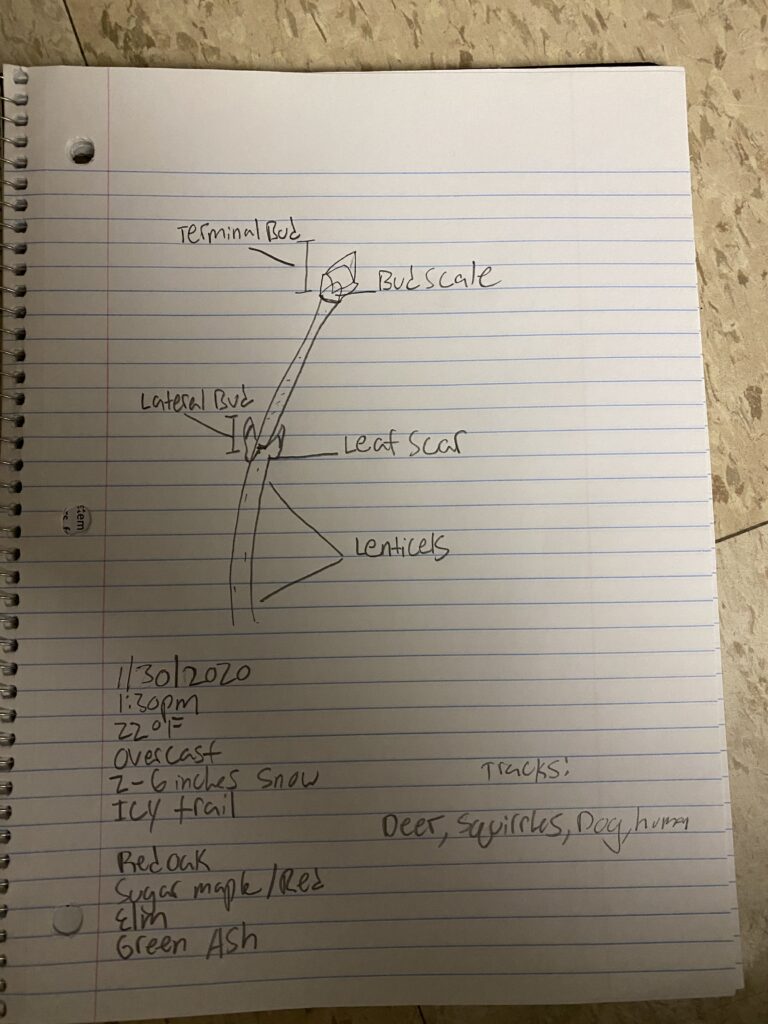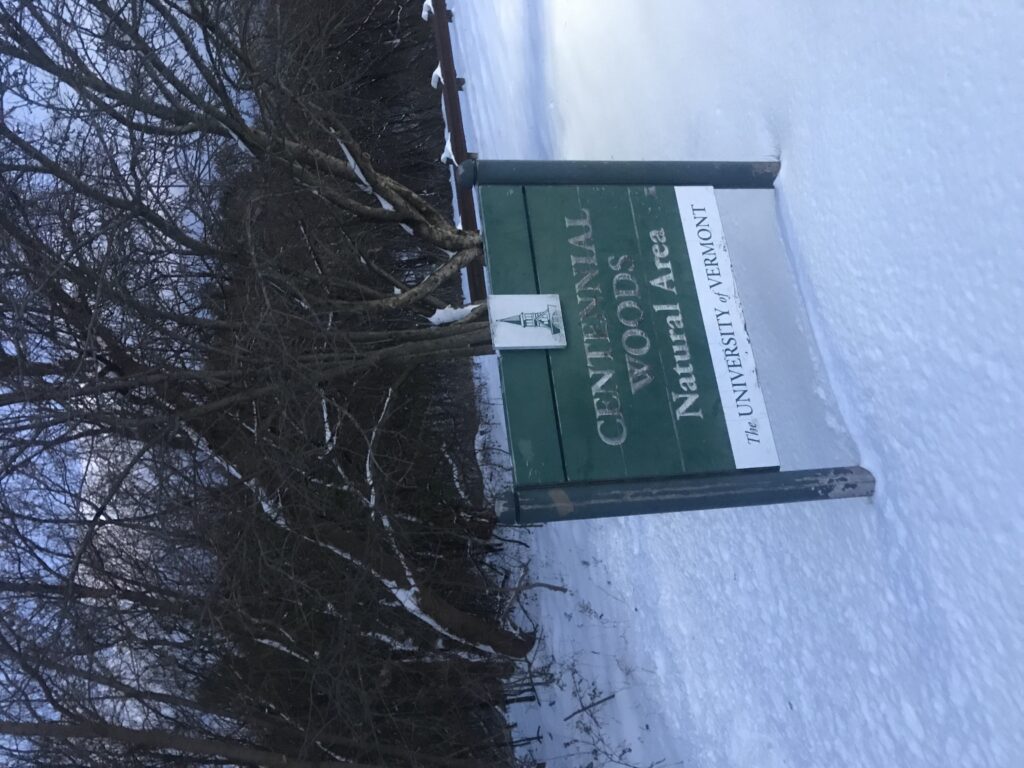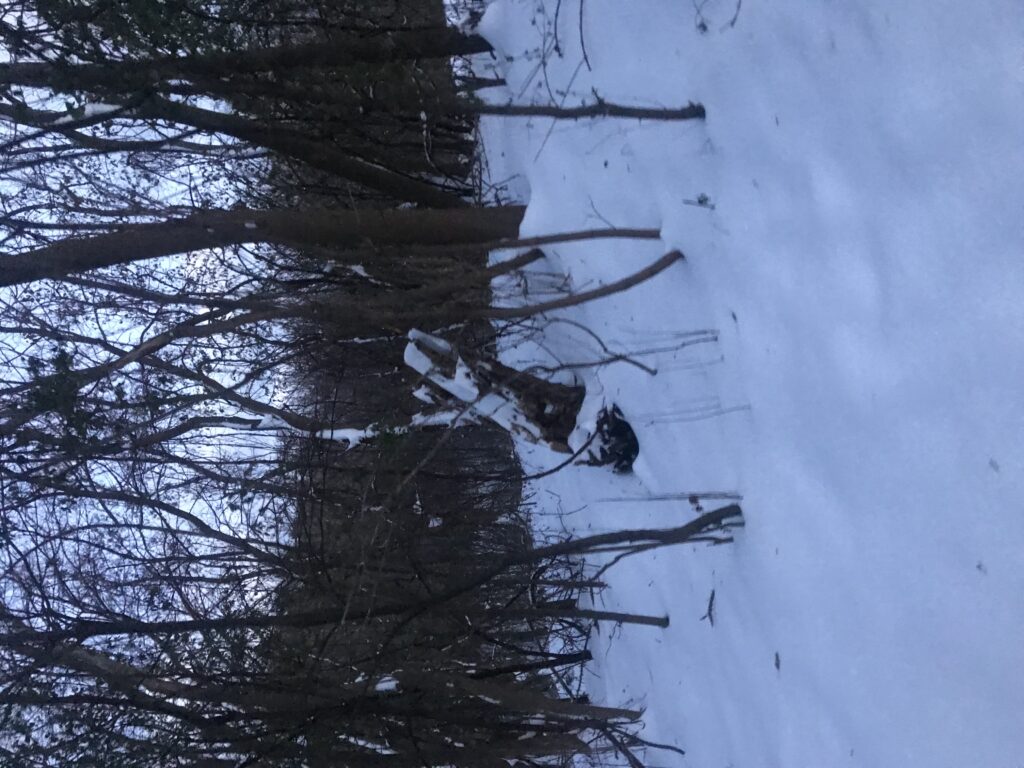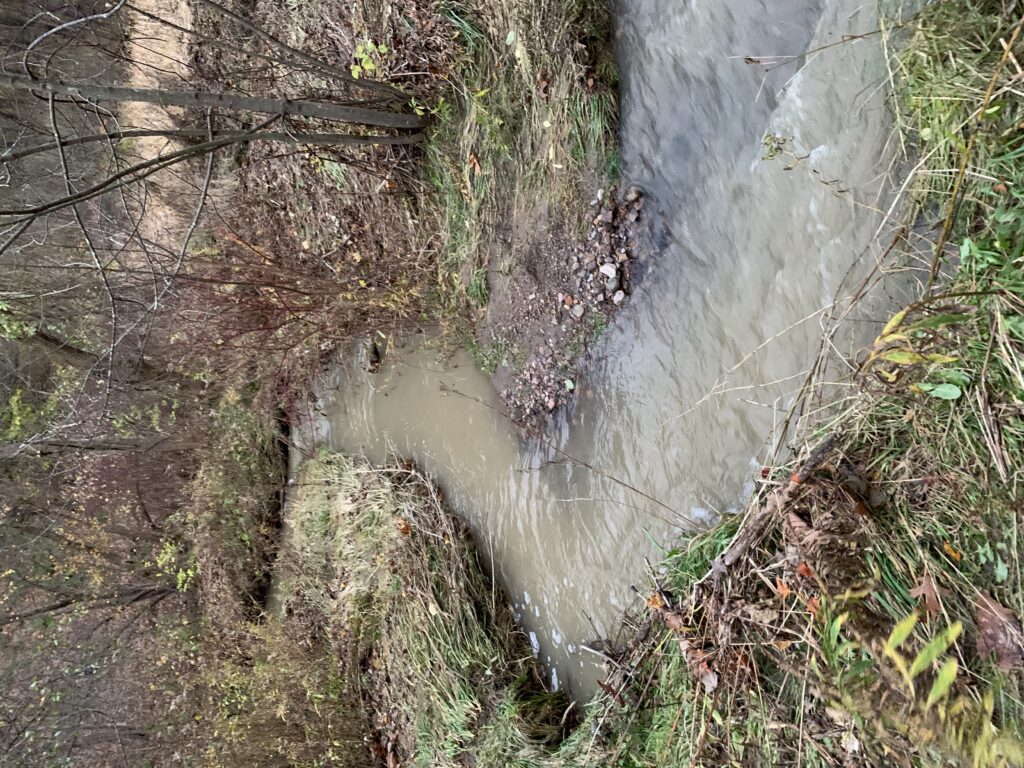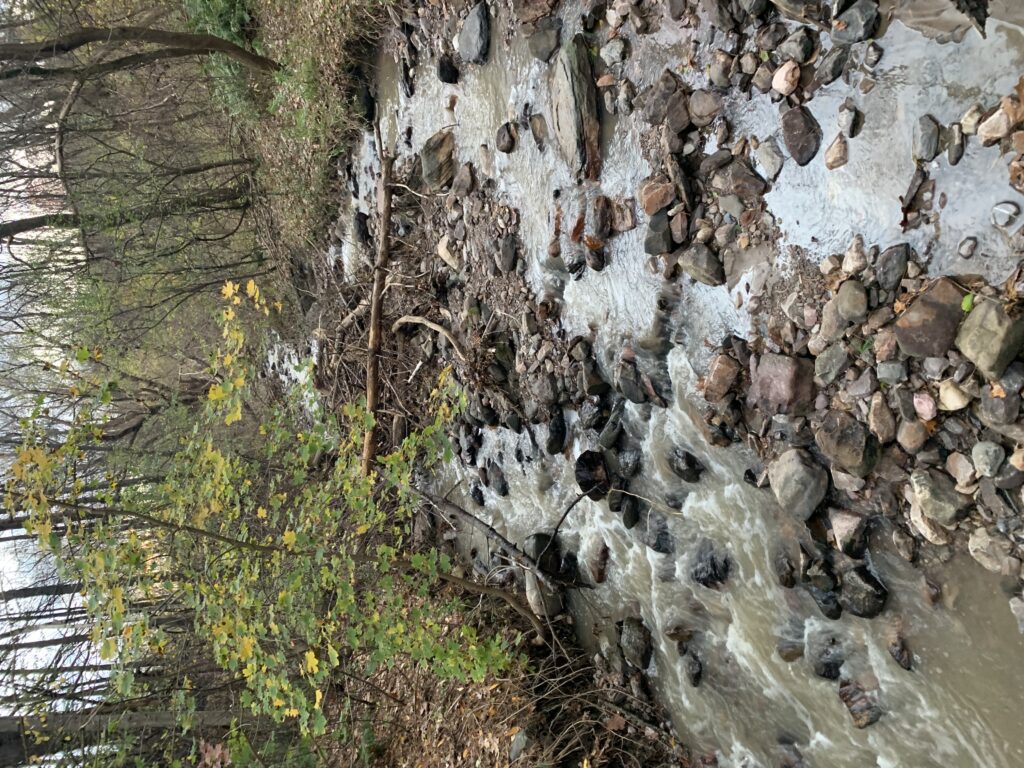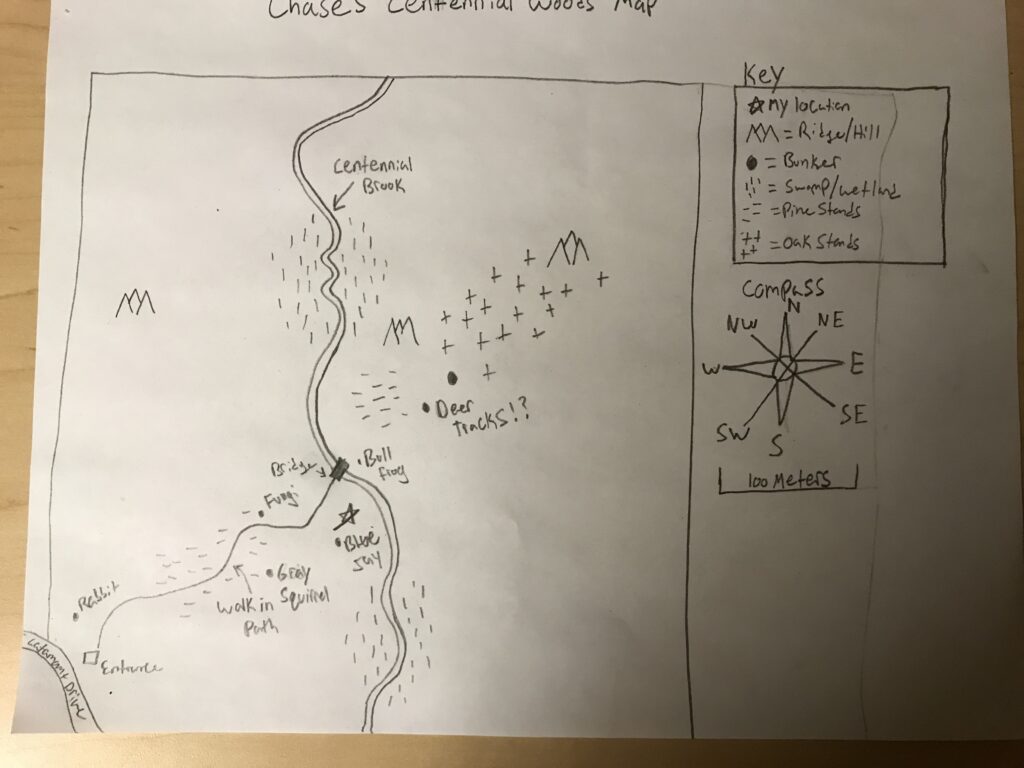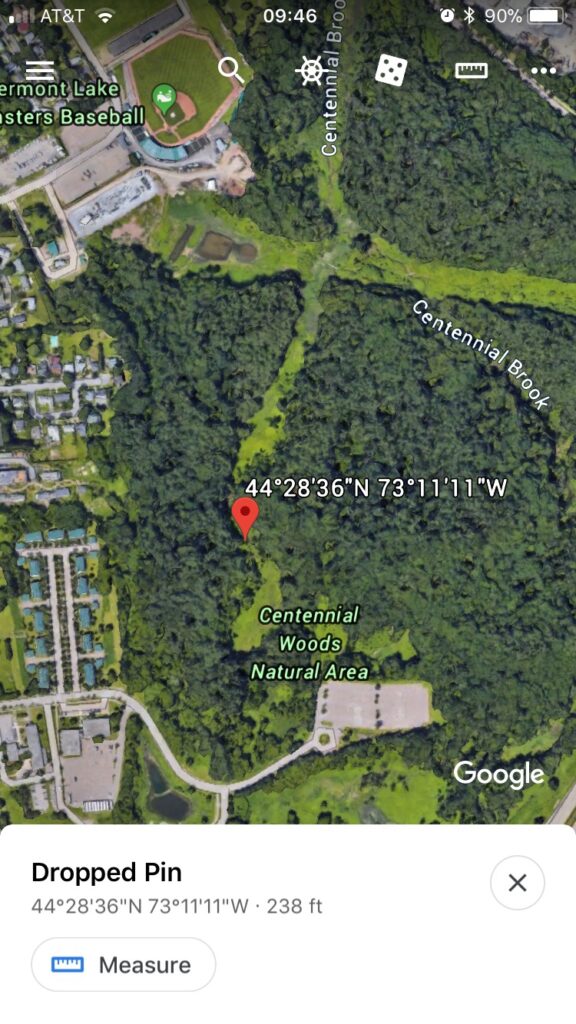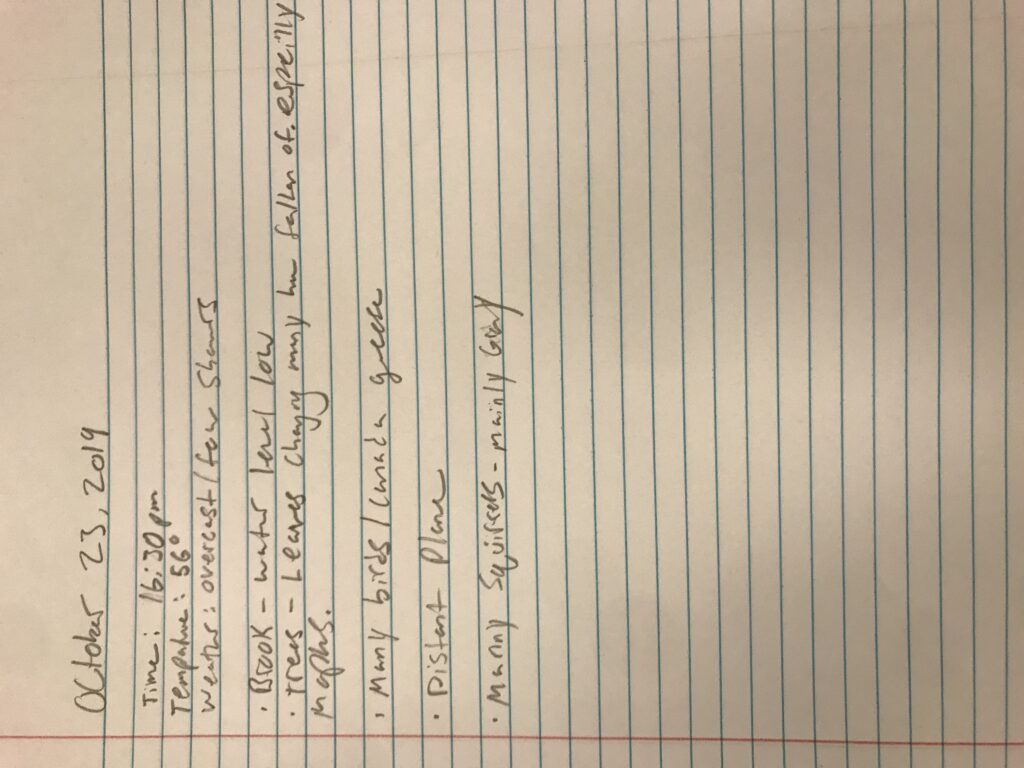Winters in Vermont are often long and frigid; however, this winter has been fairly mild with warm spells. Today, February 27, 2020 is my first time visiting my Phenology location in Centennial Woods since January. The biggest change I observed today is the increase of snowpack that is now above 12’ inches deep. In addition, the weather seems to be warming with a temperature of around 30 degrees Fahrenheit today. However, earlier today it was raining in Burlington before turning into snow, suggesting winter is starting to loosen its grip with longer sunny days.
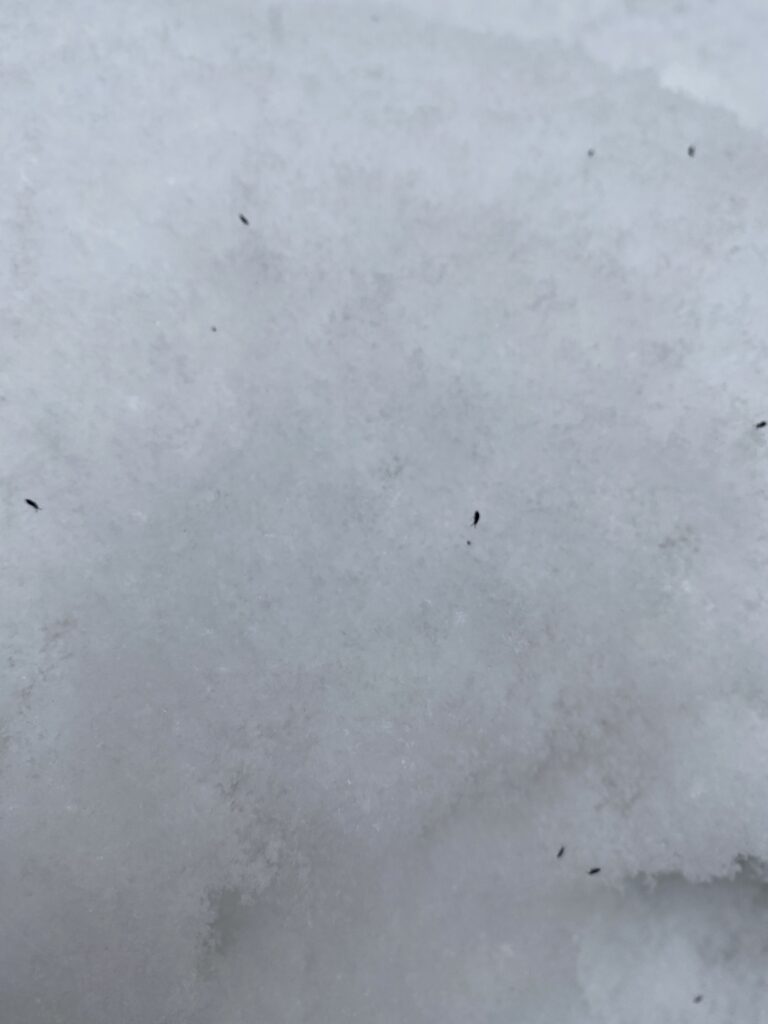
There is not much change since my last visit, although the snow appears to be wet and compacted, which is different from the fluffy dry snow earlier in the year. This can be contributed to the sun beating down on the snow as it is higher in the sky, and the days are longer.
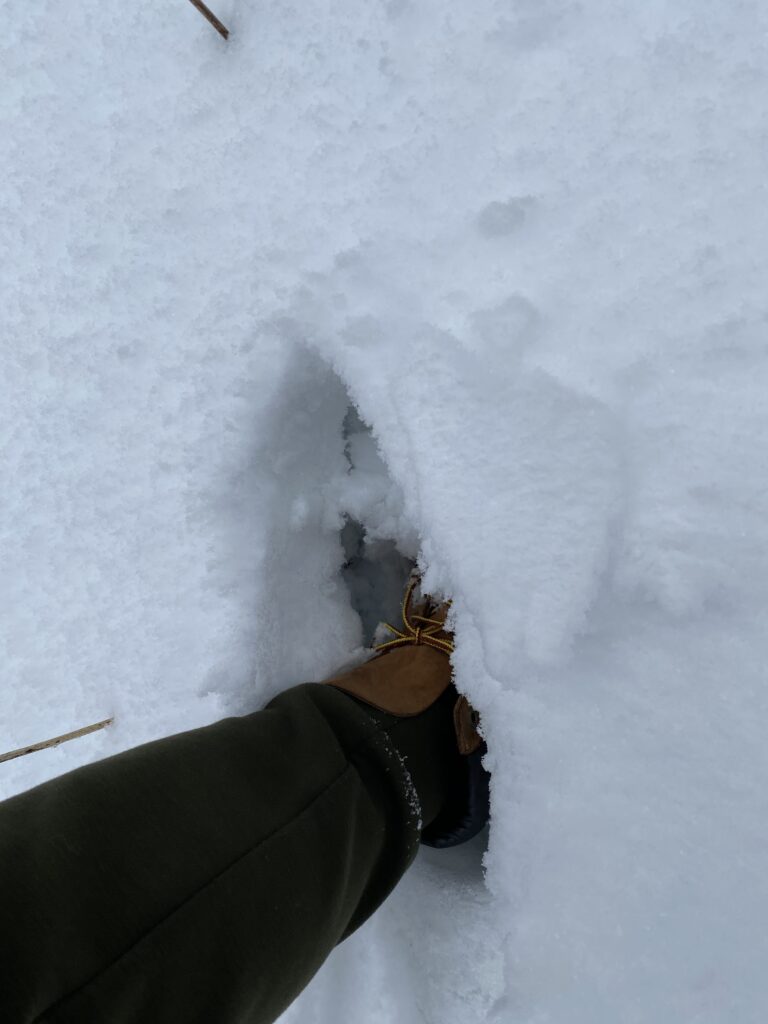
On my adventure today I saw only a few wildlife species, and very little sign. This is in part because today we received about 3’ inches of new snow that covered wildlife tracks that where older than a few hours. I was able to find old tracks that appear to be a White-Tailed Deer in the same location I found them in my previous outing. The animal appears to be running, and my guess it the potential Deer was running from either humans, or a dog that was hiking with its owner. My location is near Centennial Brook, and I believe the Deer like this location as it is a water source, but also in the lowlands of the brook are abundant tree browse from early successional trees.
It is truly remarkable to have this wood in Burlington as it allows species like Deer to survive so close to the city. Deer have few predators in Vermont, and much less in the Burlington area as Black Bear and Coyotes hate human contact. Centennial Woods offers deer cover from snow with its mixed soft wood forests of Eastern Hemlock, and White Pine, and great food sources from the Red Oaks and young forest growth. As before evidence of browse is present throughout the forest.
